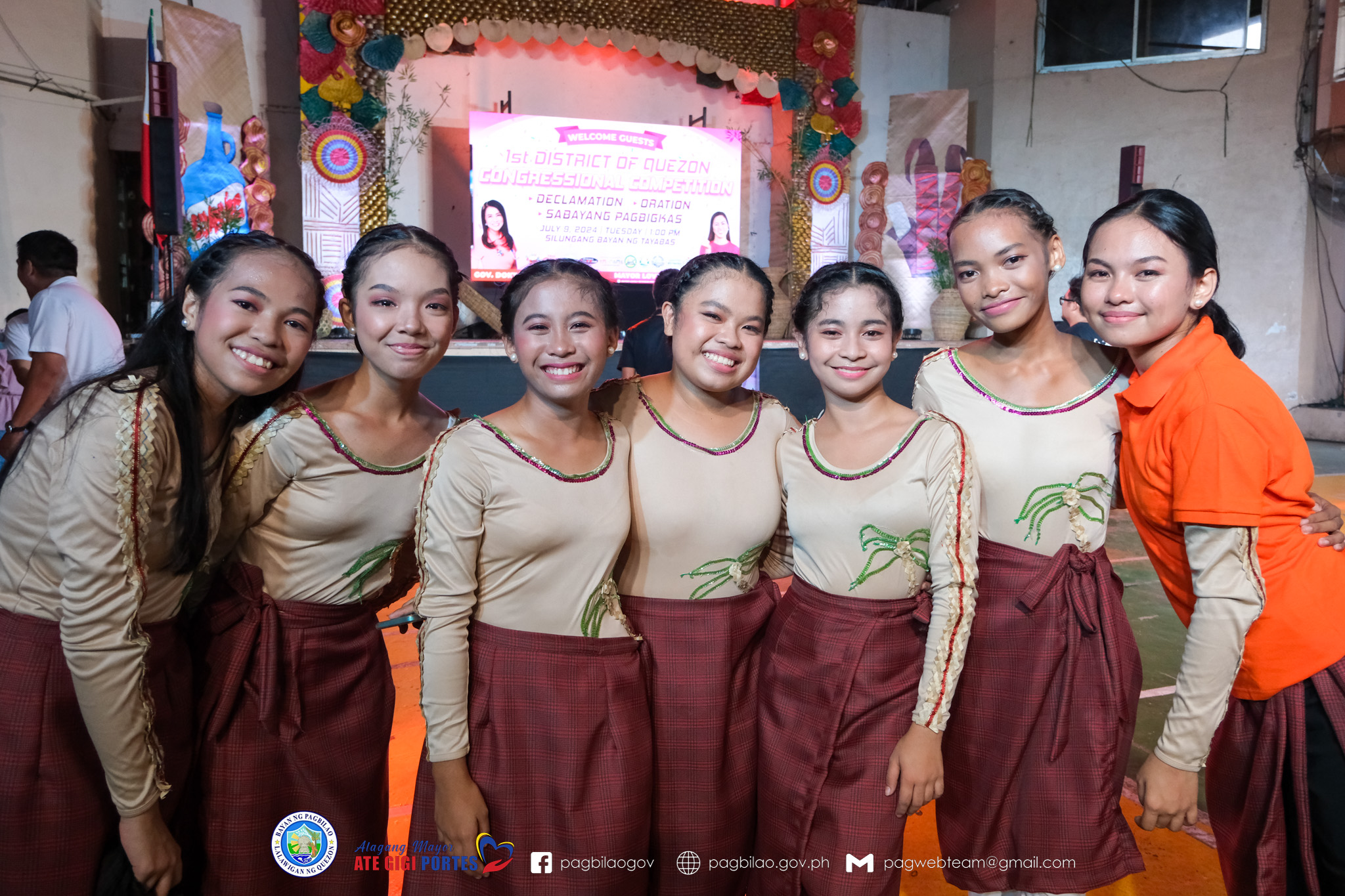INFRASTRUCTURE OTHER SERVICE
Major infrastructure in the year under review was the construction of a bridge in Ila. Bagumbungan which gave the residents the convenience of going to and fro the area even during heavy rains without the fear of water rise and strong current. Vehicles can easily access the connecting Iba. and Ila. Bagumbungan anytime.
Another major infrastructure is the completion of Sentrong Pangkalusugan and Sentrong Pangkabuhayan, and the Public Market located at Brgy. Sta Catalina and Del Carmen respectively.
The Ecological Park had its second lagoon to cater to the increasing volume of solid wastes generated in the municipality.
The total road network covers an area of 98.5421 hectares which is about 17.00% of the total built-up area or 0.56% of the total land area. With a width of 4 meters, the area occupied by urban roads is 14.4454 hectares or 14.70% of the total area covered by roads.
The remaining roads by administration level are spread out to the barangays of the municipality. These are of varying widths from four (4) meters for barangay road, eight (8) meters from provincial and ten (10) meters from national road.
The area covered by rural roads is 84-0967 hectares or 85.34 % of the total area occupied by roads.
The Philippine National Railways railroad traversing the municipality occupies 3.3114 hectares.
Transportation
The municipality is strategically located at the heart of Quezon Province and it serves as a linkages of Bondoc Peninsula and Bicol Region to the capital city of Lucena , Bicol bound bus services are passing by the municipality and it can be reached by 2-3 hour travel from Manila. Common terminals are situated at the Grand Terminal in Lucena City.
There are temporary jeepney terminals in Pagbilao for various route such as Lucena City, Brgy. Bigo, Sil. Malicboy, and Grande Island and vice versa. Jeepneys travel until 9:00 p.m. daily to Lucena City and vice versa and travelers make use of buses going to Bicol Region as alternatives beyond 9:00 p.m. in going to Pagbilao. All barangays are accessible by land transportation however, in Brgy. Iba. Polo last trip is 5:00 in the afternoon
Road Network
The municipality of Pagbilao is accessible by land and water transportation. The Daang Maharlika via Old Zigzag Road with new zigzag diversion road is considered as national highway. The Pagbilao-Tayabas Road is considered as provincial road. Thus entry to the municipality is possible through all points.
External and internal movements of goods and services are facilitated by the presence of provincial and national roads traversing the poblacion that facilitates the movements and trade activities in the rural areas.
Social Services Facilities/Utilities/Amenities
As provided in the LGU of 1991, Social Welfare and Development Office should cater to the formulation of measures for the approval of the Sanggunian and provide technical assistance and support to the governor or mayor, as the case may be, in carrying out measures to ensure the delivey of basic services and provision of adequate facilities relative to social welfare and development services. As such, the DSWD facilitates in giving protection and rehabilitation for socially disabled persons and for physically and mentally handicapped. It also provides an integrated welfare package to the populace that answers correspondingly to their needs. It controls further deterioration of the socially dehumanizing condition of the disadvantaged segment at the community.
The office on Social Welfare and Development Services (OSWDS) headed by the Municipal Social Welfare and Development Officer (MSWDO) is created under RA 7160
To further serve clients, the LGU has funded the construction of a day care center for the elderly (RA 7876), construction, maintenance and upgrading/improvement of thirty one (31) day care centers for preschoolers (RA 6972) and a space for Training and Production Center was also provided enough to cater the needs of women and youth and other unskilled and economically unproductive individuals. This center is being equipped with thirty (30) sewing units and training equipments and accessories.
Agriculture
The pronounced rainy season has contributed much in the total yield of the municipality is agricultural production. Agricultural activities have been the traditional economic base of the municipality. Areas for agriculture are occupying the biggest land use category compromising 12,381.252 hectares or 69.71% of the total land area.
Coconut stands as the major agricultural cash crop of the municipality. The Philippine Coconut Authority (PCA) data shows that 5,562.3200 hectares or 44.92535% of the total agricultural land devoted to crop production and 31.32% of the municipality’s total land area is covered by coconut plantation.
Rice is being grown in irrigated lowland rice fields with an area of 2,453.2500 hectares or 19.814% of the total agricultural areas and 13.81% of the total land area of the municipality. These areas harvest twice a year. The average yield is 95 cavans/hectare during the wet season and 50 cavans/hectare during dry season. These averages are still below the standard yield of 100-150 cavans per hectare. This may be due to inadequate agricultural support facilities, finances and traditional farming practices. Rice lands are considered as prime agricultural lands and are non-negotiable for conversion to non-agricultural uses.
Other crops produces are vegetables, banana, citrus, mango, rambutan, corn, and root crops. These comprise 1,245.0000 hectares or 10.06% of the agricultural areas and 7% of the total land area.
In terms of coconut and other vegetable areas, selective conversion can be on a per project basis. These areas are classified under the National Protected Agricultural Areas System (NPAAS).
Breakwater/Fishponds are considerably part of the agricultural area and activity composed of 1,092.6800 hectares.
Another 2,028 hectares are devoted to Special Agricultural and Fisheries Development Zone (SAFDZ).
Water Supply
The main source of potable water of people of Pagbilao is the Quezon Metropolitan Water District. Other sources are rain water, open well, natural spring that are scattered around the municipality. Piped water and other water shed areas.
In the rural barangays, potable water are used by means of natural resources through the commercial faucet and other means
Power
The Municipality of Pagbilao is presently tagged as the power capital of Southern Luzon. The TeaM Energy Philippines is generating 750 MW electricity through the Coal Fired Thermal Power Plant but the municipality is served by the Manila Electric Company (MERALCO). It is 100% energized already. It only means that electricity has already reached all barangays. Only those households which cannot be reached by the secondary lines do not have their own. Others who are far from the primary line are subsidized by the TeaM Energy/DOE through the ER-94. The LGU, on the other hand, provides solar posts/solar lights to far flung barangays unreachable by Meralco services.
The municipality being 100% energized; however, of the total rural households, about 42.3% or 5202 rural households are unserved. It is envisioned that by the end of the planning period in 2022, all households are already energized.
As to kind of fuel used for cooking, about 14.46% (2151) of the total households use liquefied petroleum gas (LPG). A good number of households still uses wood for cooking.
Communications
With the proximity of Pagbilao to the capital city and to Manila, communication has played a significant role in the development. But the municipality has telephone system, a radio satellite station, newspapers and magazines in circulation among others.
But in the early part of 2012, Digitel was bought by the PLDT, thus, making the municipality under the landline monopoly of the said company. There are, however, mobile companies such as Globe, Smart, Sun, and Alcatel providing telecommunications services to the municipality.
There is no local print media in the municipality except that of religious one which circulates on a weekly basis but all material broadsheets, tabloids and magazines are in circulation on a daily basis.
Postal Services
The Philippines Postal Corporation is situated in Alvarez street renting a private establishment. It is manned by a single personnel. It is serving six barangays in the poblacion and 21 barangays in the rural areas. Letters are being delivered on schedule. Barangays Polo and Malicboy particularly are visited once a week. Only one letter carrier has his motorcycle. Letters received from other parts of the country and abroad are delivered by van daily as well as mails for dispatch to other places are picked-up for Lucena Sub-distribution center.
Solid Waste
The solid waste is directly proportional to the population. The usual manner of garbage disposal per household is 4,118 (42.27) picked up by service garbage truck, 2742 (28.14) and dispose of in a sanitary land fill by personnel with a disposal equipment of seven (7) garbage trucks, 1 bulldozer, 1 compactor and one (1) loader. The frequency of collection in urban barangays is twice/ a week collecting bio-degradable and non-biodegradable. Special wastes are collected on a weekly basis separate from the regular garbage collection.
There is an existing 6-hectare ecological park situated in Brgy. Iba. Bagumbungan in adherence to RA 9003. It is fully operational and some facilities and equipment for processing of residual wastes will be utilized in the solid waste management in the area. The LGU has purchased a segregating machine which expedites the process of segregating wastes and a process of making bricks and Monobloc chairs is employed
The municipality has designated a Municipal Environment and Natural Resources Officer who is in charge of planning and monitoring the Solid Waste Management activities. There is also a Public Services Officer who is in charge of collection of residual wastes with 25 personnel.
Toilet Facilities
Toilet facility is one common basic need of every household. As of 2012, toilet facilities per household includes 6,807 (69.87) sanitary toilets, 872 (8.95) unsanitary toilets, 2,062 (21.16) without toilet. The total target of toilet bowl distribution is 2,934 (30.11) households in the municipality.
Being a part of the then Human Ecological Security (HES), distribution started way back 1995 which should have been finished in 2000. But it seems that target beneficiaries are sprouting like mushroom. The LCE included the program as part of the regular Sanitation project.
Population (2022)
Land Area
Year Founded
Barangays

Pagbilaoin Culture
-
Parades and Street Dances:
- Floats and Costumes: The streets of Pagbilao come alive with colorful floats and participants in traditional costumes.
- Dance Performances: Street dances featuring local folklore and themes, often performed by students and community groups.
-
Cultural Shows and Competitions:
- Music and Dance: Performances by local artists, including traditional and contemporary music and dance.
- Sports Events: Basketball, volleyball, and other sports competitions are often held as part of the festivities.




